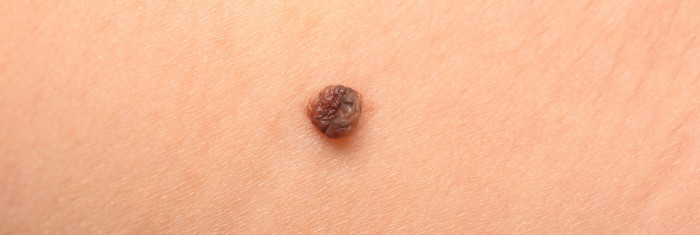
*Individual results may vary.
Moles are a common skin concern that we treat frequently at Platinum Dermatology. High sun exposure during childhood makes Australians prone to their development. In fact, many Australians have up to 100 moles that are 2mm or more in size by the age of fifteen.
In this article, the skin specialists at Platinum Dermatology take a close look at moles and the various solutions available to treat them.
Platinum Dermatology’s Cosmetic Mole Facts
Moles are dark spots and irregularities that come in various shapes and sizes. These skin growths are usually black or brown. Some moles are considered appealing and are known as beauty marks. Others are considered bothersome or unattractive.
Many moles are present at birth, while others develop in early childhood. They can appear anywhere on the body, individually or in groups. Moles are most common on the nose and facial areas, as well as the arms and chest. Unfortunately, some moles lead to dangerous health risks, including cancer.
“It’s important to get to know your skin and what is normal for you, so that you notice any changes…Develop a regular habit of checking your skin for new spots and changes to existing freckles or moles.” – Cancer Council of Australia
2 Types of Moles We Treat at Platinum Dermatology
Moles are categorised in two ways:
- Congenital Nevi – These moles are present at birth and affect about one in one hundred people. They have a greater likelihood of developing into melanoma (skin cancer) than dysplastic nevi (see below).
- Dysplastic Nevi – These moles are large and irregular in shape. Their colour tends to be uneven, with a light, uneven edge and darker brown centres.
Perhaps even more important than the treatment we provide, the skin specialists at Platinum Dermatology are trained to identify a pre-cancerous mole early on, so it can be removed before causing a serious health risk.
Click here to learn more about self-diagnosis and how to check your skin for cancerous growths.
Is Mole Removal Surgery Right for You?
There are two surgical approaches to removing a mole. These options are for benign mole removal NOT for ones of medical concern. Medically concerning moles, are either excised or biopsied.
- Excision – The doctor numbs the area with anaesthetic, and then cuts out the mole.
- Shaving – A scalpel is used to shave the mole so it becomes flush with surrounding skin. It should be noted, however, that this method only removes the surface of the mole. Cells left beneath the skin may cause a mole to regenerate.
A disadvantage to traditional surgery is that it leave scars. This is particularly troubling to patients who want nuisance moles removed from their face.
Advantages of Laser Mole Removal Treatments
The skin specialists at Platinum Dermatology offer people with nuisance moles a cutting edge solution to mole removal that doesn’t involve cutting. Laser mole removal is a non-invasive treatment with*
- No cutting of the skin
- No burning of the skin
- No scar in any cases or a very small scar compared to surgery
Light from our industry-leading Sciton laser is used to vaporise mole tissue. The tissue is then wiped away and a small graze-like spot is left which heals in a few short days. Patients at Platinum Dermatology are pleasantly surprised by this high- tech and quick solution to a bothersome problem.*
No Mole Is Too Big Or Too Small for Platinum Dermatology
If you have questions about moles, melanoma, skin tags, freckles or any other condition affecting your beautiful skin, contact Platinum Dermatology on 02 8014 6500 or use the contact form on this page to learn how we can help you look your most attractive.
* Individual results may vary.
